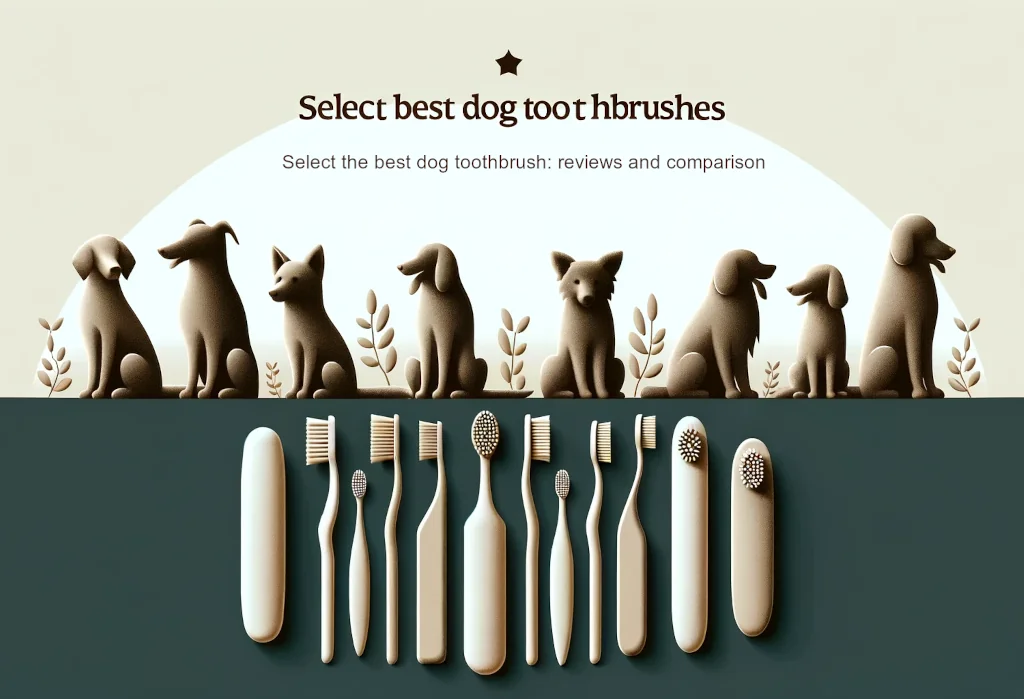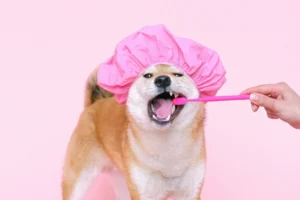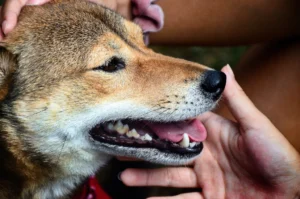Disclosure: We may earn a commission from helpful, relevant links in our content. No cost to you. See our privacy policy.
Brushing your dog’s teeth can sometimes feel more like a wrestling match than part of a grooming routine. But hey, at least we’re not the ones having to taste dog toothpaste, right? This guide will walk you through the top choices to turn that daily tussle into a breeze, ensuring your fur baby’s dental health is top-notch.
By the end of this read, you’ll have a list of tried and tested toothbrushes at your disposal, so you can pick the best one without the headache of scrolling through endless options online.
Key takeaways:
- Choose a toothbrush for your dog that blends ease of use with effectiveness; finger toothbrushes are great for beginners, while double-sided and dental kits offer comprehensive care.
- Make toothbrushing a positive experience for your dog by starting slow, using dog-friendly toothpaste, and rewarding them after each session.
- Maintain your dog’s toothbrush by cleaning it thoroughly after use, using a disinfecting solution weekly, and storing it in a well-ventilated area or even freezing it to kill bacteria.
What Makes a Toothbrush Great for Dogs?
When it comes to keeping our furry friends’ teeth sparkling and healthy, not just any toothbrush will do. A great dog toothbrush blends ease of use with effectiveness. It’s about finding that sweet spot where the toothbrush is comfortable for both you and your pet. Let’s dive into the key features you should keep an eye out for:
- Ease of Use: If it feels like you’re wrestling a bear every time you try to brush your dog’s teeth, you might need a different toothbrush. Look for designs that are easy to grip and maneuver inside your dog’s mouth.
- Material: The bristles should be soft enough not to hurt your dog’s gums but sturdy enough to scrub away plaque and tartar. BPA-free plastic is a common choice for the handle.
- Effectiveness: A toothbrush that reaches all the nooks and crannies of your dog’s mouth is essential. Some toothbrushes are designed to clean multiple sides of the teeth at once, making the job quicker and more thorough.
Remember, a brush that you find convenient and comfortable to use is one you’re more likely to use regularly. And regular brushing is key to preventing dental diseases in dogs.
The Top Picks Reviewed
After scouring the market and comparing notes with veterinarians, here are our top picks for dog toothbrushes, each with its unique draw:
-
Finger Toothbrushes : Ideal for dogs that are new to brushing, the Finger Brush slips onto your finger, giving you precise control. Its soft silicone bristles are gentle on gums, making it a great starter toothbrush.
-
Double-Sided Toothbrushes : The The 360° Toothbrush stands out for its innovative design. One side has traditional bristles for the surfaces of the teeth while the other has a spongy texture meant to clean along the gum line.
-
Dental Care Kits : Vet’s Best Dental Kit comes with a toothbrush designed for dogs of all sizes and a specially formulated toothpaste. It’s perfect for pet owners looking for an all-in-one solution.
Unique Tip
Here’s something you might not find on every other blog: Look for a toothbrush with color-changing bristles. These bristles change color to indicate when it’s time to replace the brush, ensuring your dog’s dental care is always effective.
How Can You Get Your Dog to Enjoy Toothbrushing?
Let’s face it, most dogs aren’t born loving the idea of having their teeth brushed. But with patience and the right approach, it can become a bonding experience for you both:
- Start Slow: Introduce the toothbrush slowly, letting your dog sniff and lick it so it becomes a familiar object.
- Use Dog-Friendly Toothpaste: Never use human toothpaste; instead, choose flavors designed for dogs like chicken or beef that will make them look forward to brushing time.
- Reward After Each Session: Positive reinforcement goes a long way. A little treat after each brushing can make your dog associate toothbrushing with happy times.
- Be Consistent but Patient: Make brush time part of your daily routine, but keep sessions short in the beginning. Gradually increase the time as your dog gets more comfortable with the process.
Remember, your attitude during teeth cleaning sessions can greatly influence how your dog feels about them. Keep the vibe positive and stress-free, and over time, your dog might just start looking forward to this daily ritual.
Caring for Your Dog’s Toothbrush
Let’s face it, your pup’s pearly whites are as important as your own, and the weapon of choice in the battle against plaque is a good toothbrush. But, just as you wouldn’t neglect your own toothbrush’s maintenance, the same goes for your furry friend’s dental tool. Stick with me as we dive into the nitty-gritty of keeping your dog’s toothbrush in tip-top shape. Trust me, your dog’s tail will be wagging in appreciation.
When to Say Goodbye to Your Dog’s Toothbrush
Just like us, dogs need a fresh toothbrush periodically. How often? Every three to four months is a good rule of paw. If you notice the bristles are frayed or the brush looks worn out sooner, it’s time for a change. Don’t wait until the toothbrush has lost its cleaning mojo; a worn-out brush won’t do your dog’s dental health any favors.
Keeping It Clean
After each brushing session, a thorough cleaning of the toothbrush is a must. Here’s how to keep it germ-free and ready for action:
- Rinse thoroughly with warm water to remove any toothpaste and debris. Make sure you get in between the bristles, as that’s where nasties love to linger.
- Use a disinfecting solution once a week. A simple mix of vinegar and water (equal parts) or a quick soak in antibacterial mouthwash will do the trick. Let it soak for about 5-10 minutes, rinse well, and air dry.
- Allow it to dry completely in an upright position in a toothbrush holder if possible. This prevents mold and bacteria from setting up camp.
Proper Storage is Key
Where you store your dog’s toothbrush is just as important as how you clean it. Humidity and darkness are bacteria’s best friends, so avoid storing the toothbrush in closed-off places like cabinets or drawers post-use. A well-ventilated area out of direct sunlight is your best bet, ensuring the brush dries properly and is ready for the next use.
A Unique Tip: The Freezer Trick
Here’s a unique piece of advice that most pet parents overlook: pop the toothbrush in the freezer between uses. Yes, you read that right. Damp environments can be a breeding ground for bacteria, and while drying the brush after each use is vital, taking an extra step can boost your dog’s dental care routine. Freezing the toothbrush can kill any remaining bacteria and is a great way to ensure the brush is as clean as possible. Just make sure it thaws a little before the next use to avoid any cold surprises for your pup!
Why it Matters
Keeping your dog’s toothbrush clean and in good condition isn’t just about dental health; it’s about overall well-being. Dental issues can lead to more serious health problems in dogs, so a clean, effective toothbrush is your first line of defense.
Remember, choosing the right toothbrush is only half the battle—how you care for it plays a huge part in your dog’s dental health journey. A well-maintained toothbrush is a powerful tool in preventing gum disease and ensuring those doggy kisses are as fresh as they can be.
In conclusion, your dog’s toothbrush is a key player in maintaining their dental health, and with these tips, you can ensure it performs at its best. From knowing when it’s time to replace the brush to keeping it clean and stored properly, these simple steps can make a big difference. So here’s to happy, healthy smiles on our furry friends—because they deserve nothing but the best.
Alex, a passionate animal lover, has experience in training and understanding animal behavior. As a proud pet parent to two dogs and three cats, he founded AnimalReport.net to share insights from animal experts and expand his knowledge of the animal kingdom.





